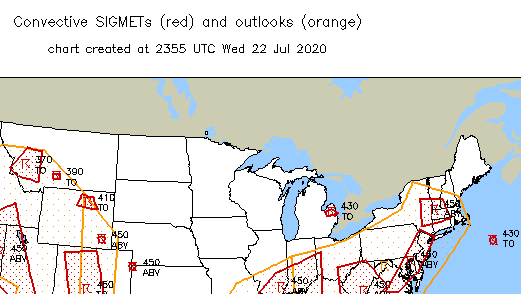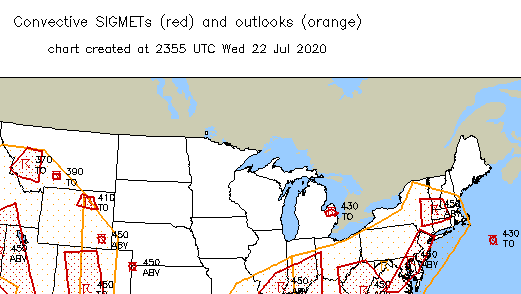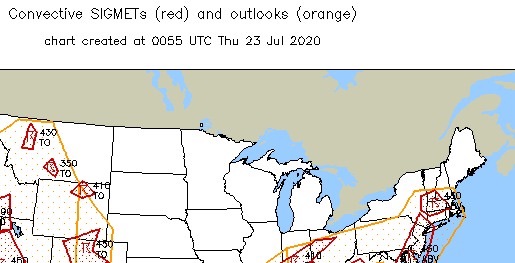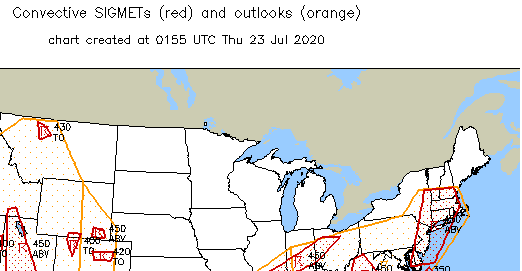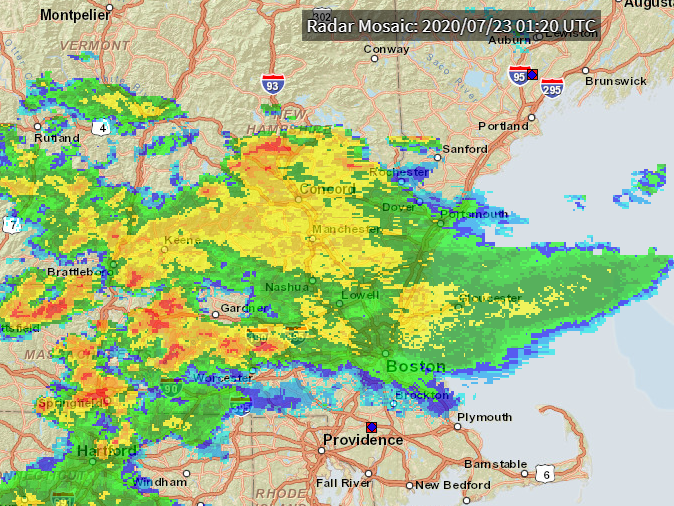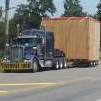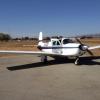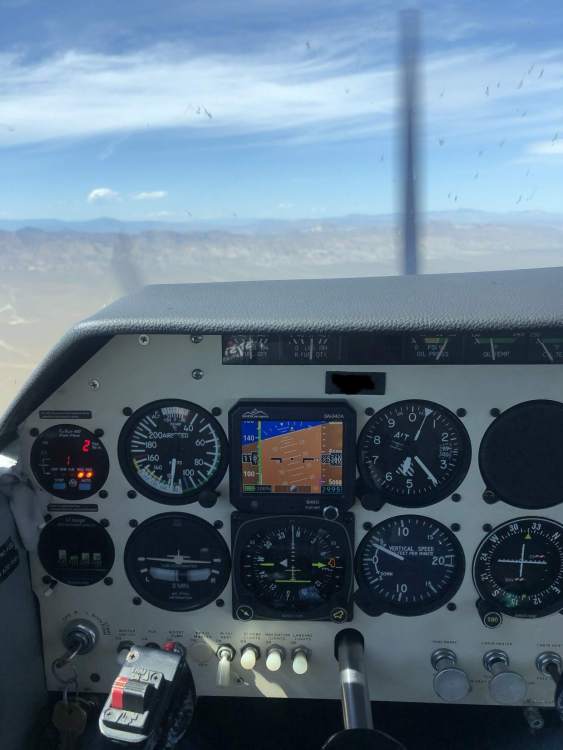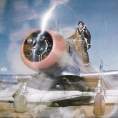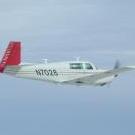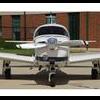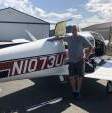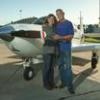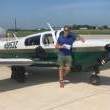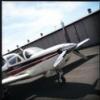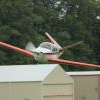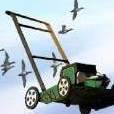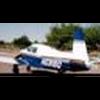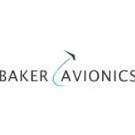Leaderboard
Popular Content
Showing content with the highest reputation on 08/30/2020 in all areas
-
The Bravo is the most undervalued plane in the fleet. Once a turbo pilot, its really hard to go back to an NA plane. And only a turbo pilot understands they're flown very differently and thus I'd expect you'll be very dissatisfied to go back to 200 hp NA Mooney. And coming from an Acclaim, it makes more sense for you to stick with a longbody if you can. Go Bravo - (even though I much prefer the 252/Encore for its efficiency).7 points
-
Sorry I'm a bit late to the game...lots going in these days and don't get much of a chance to participate. There's certainly a lot to unpack in this thread and I won't specifically respond to every post, but let's first understand that every weather product or service has its limitations. Every distribution system has it's limitations. Take some time to learn those. First, the preflight portion of a flight is critical to understanding what you see or don't see on your in-cockpit devices. Surprises should be rare. Second, I rarely ever zoom in on an area with a radar mosaic. I have my display zoomed out such that I can understand the organization of the weather and how it matches with my preflight analysis. This helps to understand the trends of the intensity and development or dissipation. Turns out in this situation, that is the key. Third, the FIS-B radar depiction is a composite reflectivity mosaic that recently was switched to using MRMS which I discussed in my blog over a year ago. The regional mosaic data is broadcast and updated every two minutes. This likely the most superior and fresh radar mosaic available today in the cockpit. Even so, it does have real limitations and should always be used as a gross vectoring aid and never used tactically to maneuver through weather. For Tim's original post, there's no way for me to specifically comment on the actual issue you faced. I don't comment on anything associated with FF anyway, and I wasn't in the cockpit and don't really have specific explanation on what you were seeing. However, using the date/time of the flight, it's pretty easy to see what was going on. There was a convective SIGMET issued to the west of the route at 2355Z (7:55 pm). By 0055Z (8:55 pm) or shortly after departure, the convective SIGMET was still to the west of your route. These areas of thunderstorms had tops above FL450. By 0155Z (9:55 pm), the convective SIGMET was expanded to connect to the convective SIGMET to the south and the eastern edge covered the route. Most of the significant convection at this point was to the south. This matches well with the IR satellite image. Note the deep blue/purple tops marking the convective area outlined by the two earlier convective SIGMETs above. These are cold cloud tops indicative of deep, moist convection. With time, these cells began to dissipate creating what is called a convective debris shield which is often characterized with light to moderate stratiform-type rain sometimes with occasional intra-cloud lightning (FIS-B lightning doesn't show intra-cloud lightning, but SiriusXM does). So the dBZ levels can be in the 40-45 range and may often look pretty ominous, but the cellular structure wasn't present. You can see the cloud tops began to warm as this transition occurred (more lighter blue and no purple). Here's the radar mosaic (not the MRMS version), but it clearly shows some fairly moderate returns from this stratiform-type rain falling throughout the destination airport. But the cellular structure is gone. The moral of the story is to understand the limitations of the devices you are using and know what colors represent what level of dBZ (reflectivity). Those colors you see are very dependent on the vendor providing the service and they can be different. Each vendor chooses how to present this depiction (color to dBZ). Hope this helps.4 points
-
It goes without saying that the rudder trim on the ground should be neutralized until trimming full right trim on entering the runway. When I'm cleared for takeoff, I trim full right rudder, enter the runway, look over my shoulder to make sure the baggage door it closed, and turn on the strobes and pulse lights just like the "big" guys. I imagine it looks both Professional and "cool" from the Tower and anyone looking when the lights go on.3 points
-
I am trying to remember the details on Catalina ditchings, my recollection is that in all the years till recently we never lost a plane over the channel enroute to or from Catalina and the one plane that did go down not all that long ago was a C172 on a suicide mission. But there may have been one ditching - but I think what I am recalling was a plane that went down off shore that had nothing to do with going to Catalina. Here is one true story from a few years ago that was an honorable Darwin Pilot award mention. A very young and brand new commercial pilot rented a C172 and took a couple of his pilot school buddies up from San Diego area to Orange county or LA area, for something of a celebratory flight. On the way back a few miles off the coast the pilot decides he's going to demonstrate a Spin to his buddies. At what seems like a safe altitude he performs a spin, but the pilot didn't take into account he was over a thick marine layer and was quickly IMC before he could recover. Sadly the plane fell out of the sky, into the Pacific observed by a nearby boat that quickly steered towards the impact zone. The only survivor, Mr Lucky was sitting in the back seat, the impact killed the two front seat pilot and co-pilot and broke one or both femurs of the rear seat pax. Pretty certain he too would have drowned if he had to get past the front seat guys and out one of the doors, but the impact blew out the rear window now above the rear seat pax. So once he was unbuckled he was able to pull him self up through the rear window and get to the surface where he was pulled out of the water by the nearby boat that saw them go in. You can't make up stuff like this. So overall the stats are really good that if one avoids Kamikaze suicide dives and Spins over an overcast layer, that its very unlikely to go down in the channel - with the far greater danger with landing and departure from the AVX airport where there has been a number of accidents.3 points
-
AB takeoffs are (or were in my day) SOP unless you were really trying to conserve fuel, say on a cross country where you were trying to stretch the range. The airplane can do a Mil power (no afterburner) takeoff in most configurations but it uses a lot more runway. If you were operating at heavier weights with a lot of bombs and external tanks, it wasn’t even possible. Plus it is fun to make the sound of freedom!3 points
-
I could go down the rabbit hole with this on a long, pedantic discourse on civil procedure, the doctrine of sovereign immunity and common law in addition to the Federal Tort Claims Act, but let's avoid that. Instead, a few comments: 1. Procedural posture: This is styled a cross-complaint, but It really looks like what I'd call a a third-party complaint, because it brings in new parties (the controllers). So yes, it is an attempt to deflect blame to the controllers. This is a common tactic when pilots (or any other defendants) screw up. Find someone else to fob it off on. The more the merrier. 2. The controllers will not have individual liability. The federal gov't is ultimately liable. I'm not an expert on the limits of the Federal Tort Claims Act, but I''ll bet if I dug around I'd find a dollar limit on liability, too. Here in WI it's a measly $50,000 per claim for the state and municipalities, unless it's a motor vehicle accident, where it's upped to $250,000. 3. Note the relief sought. Apparently California is different from my jurisdiction, if there's a common law doctrine of "Total Equitable Indemnity." Indemnity is a doctrine that requires someone to completely take over another's liability. It seems out of place here to me. It's usually a creature of a contractual agreement. The other claims for contribution make more sense. Those claim the controllers share fault with the pilot and should pay a proportionate amount of any award. 4. Considering the stakes and likely damages, the helicopter company is going bankrupt if they lose this case. There can't be an insurance policy large enough to pay all the damages. So this would be rightly viewed as a bet-the-company desperation measure. 5. Yes, juries do stupid things. Remember the Carnahan crash in 2000 and the $4M jury verdict against Parker-Hannafin because a vacuum pump died and an AI went Tango Uniform? That problem is exacerbated by judges letting juries hear junk science and letting emotional appeals about damages bleed into the liability determination. The Daubert and Kumho Tire doctrine about experts is fine in theory, but in practice it often get ignored by judges and ipse dixit nonsense is allowed to be spouted to the jury. And bifurcated trials separating the determination of liability from the determination of damages are frowned on as inefficient. 6. Can we please avoid cheap shots at lawyers? There are good eggs and bad eggs in every occupation and profession. And lawyers wouldn't get away with the nonsense about which people often complain if courts would smack those silly claims down hard like they should. They do it because the systems lets them, and it works. (See item 5, supra.) 7. Look at para. 11 of the pleading Flash linked -- the helicopter went from 1,500' AGL to 2,300' AGL in 8 seconds. That's 6,000 fpm. I gotta get me some of that!! Dave Piehler3 points
-
We had a wonderful time last weekend in Sunriver, Oregon at the West Coast Mooney Club Summer Conference & Retreat. Thirty one of the forty five registered attendees joined us as the wildfires and smoke kept some away. Sponsors and presenters included Don Maxwell, Jan Maxwell & Jolie Lucas (Right Seat Ready Class), Richard Simile (Thunderbird Aircraft Sales), Parker Woodruff (Airspeed Insurance), Aaron de Zafra (Crewchief Systems), Brett Stokes & Dan Riesland (LASAR). We had a catered lunch and finished off he conference day with a Parade of Planes where everyone could show off their beautiful Mooneys. Saturday evening we had an awards and outdoor movie night where the movie "Flying the Feathered Edge" (The Bob Hoover Story) was presented. We had over $2,500.00 of raffle prizes donated from Aircraft Spruce, Lift Aviation, Lightspeed, Bruce's Custom Covers, Tempest Aviation, Baker Avionics, JPI Instruments, King Schools, Crewchief Systems and Pilot Outfitters. The raffle ticket sales generated over $560.00 of proceeds that are being donated to the Bill Gilliland Foundation c/o The Mooney Summit. I am so happy that we had the opportunity to share the weekend together with other Mooniac's in such a beautiful location. Many of us enjoyed the resort activities including golf, river rafting, swimming, spa treatments and some wonderful meals. Thanks to all who joined us this year and I hope to see you all gain in 2021. Best, Michael Rodgers.2 points
-
I’m more and more confident this has solved my starting issues. @carusoam and @Vance Harral, I thought you guys were kidding when you asked me about getting it started in 2 or 3 blades, but that’s exactly what’s happening! Most starts have been cold and they are great. A few hot that have been excellent too. No occasion for flooded start yet. Thanks for all the help!2 points
-
Here’s my Sunday afternoon day dreaming thought of the day. People talk about ground runs as if they do not correctly mimic in flight power output. I understand this in the sense that, it’s impossible to put enough load on the engine to make it “work as hard” on the ground. However, we always talk about this in terms of temperature. “Can’t get the operating temps high enough”. Think about it in terms of the theory in which camp A would say, if you’re not flying enough, at least give it a good ground run to circulate the oil. Camp B would say, a ground run will do more harm than good in terms of not vaporizing the water/ creating more moisture inside the engine. It’s always argued against temperature. Conversely, I’ve had old timers watch me troubleshooting my engine or looking for oil leaks, whatever, that’ll rush over and say “you shouldn’t ground run your engine with the cowling off, it’ll get too hot and overheat it.” and then finally, I’d like to introduce the availability of our handy engine monitors, which measure CHT’s per cylinder. For paragraph one I would ask, How can you say the engine is not getting hot enough as actually flying it, when I can look at the head temperatures and see 380 degrees Fahrenheit. For paragraph two I would ask, how are you risking overheating the engine when I’m looking at a CHT of 380 degrees Fahrenheit? The two scenarios conflict with one another, yet they are commonly regurgitated. That said, what am I missing here? In either scenario it would seem that you have the ability to control either scenario to your desired outcome simply by utilizing the engine monitor. What say you?2 points
-
If you need anything reach out the Chase @Avionics Source, I bought a few things from him and always a pleasure to deal with. The Dual G5's I just got from him are almost ready to go in the panel. I probably would have finished up the wiring yesterday but I need a couple more feet of the cable for the CAN BUS. Fortunately Spruce is close by, they were just closed when I figured out I was short. Not total thread drift, I also have a 450B going in along with a GNC 355.2 points
-
Here are a few thoughts about the Bravo. Bravo is slower than the Acclaim and more nose heavy. The Lycoming engine is heavy but it has a wet head. The wet head pours oil over the exhaust valve guide to cool the guide and valve. The wet head came about in the late 50s. The Aero Commanders and Beech Queenair were trying to do pressurization and the piston engines were not up to the task. Lycoming found the engines could be a bit more serviceable by using the wet head. Beech Dukes were another example. So the Bravo cylinders make TBO but the exhaust systems are troublesome. The harder you run the engine the more you need to repair cracks in the exhaust. The other large item with the Bravo is the crankshaft. An AD note condemns all the cranks built around the late nineties and early 2000s. Amazingly some engines turn up with the condemned cranks. Good pre buys eliminate the problem. A trick that will lower the repair bills of either airplane is to grab the throttle a pull it back. Operating at 65-70% power reduces the BTUs the engine has to deal with and service life is much better. Keep in mind only 30% of the BTUs the gasoline produces turns the prop. All the rest is waste and only causes engine wear and other problems. The other end of the problem is the higher you fly the bigger a standard cubic foot of air becomes. You need a huge volume of air at altitude to get the same amount of cooling that a smaller volume of air near sea level provides. Because of this the marginal cost of getting the last few knots the salesman promised rises exponentially. To sum up the Lycoming seems to be doing a better job of cooling the exhaust valves so the cylinders do better. Continental does not seem interested in getting their engines to TBO on one set of cylinders.2 points
-
I see a lot of talk about the PMA450B audio panel. Here is a great link that does an in depth review of the audio panel for those that want a deeper understanding of it's features.2 points
-
The PMA 450B is easily the best upgrade in my, pretty well upgraded, panel. No question about it. It's also the one upgrade that really benefits the passengers as much as the pilot.2 points
-
Here is a great article John Deakin wrote several years ago that explains it. The title is Manifold Pressure Sucks! https://www.avweb.com/features_old/pelicans-perch-15manifold-pressure-sucks/ Pressure loss through the intake system is about 1 inch.2 points
-
"I’ve seen plastic buckets used all the time. But it’s in a well ventilated hangar in Florida, I haven’t been shocked by static electricity since I’ve live here." I don't care if it hasn't happened to you or you haven't seen it. Well ventilated has nothing to do with it. Why do you suppose ALL airports require that NO fuel draining be done inside hangars? Why is it that NO fueling of airplanes is done inside hangars? Do you also feel that grounding the airplane to the fuel truck to refuel it is also a waste of time in Florida? IT HAS HAPPENED. There is a reason why a ground wire is required between the steel bucket and the airframe. Or the fuel truck and the airplane. I have personally come upon a fuel draining procedure on an airplane and had the hair on my arm raise due to static electricity when I went to investigate what was being done. I personally know of one individual who suffered large areas of burns from a fuel transfer fire caused by static electricity. Sorry to be blunt but you really are playing with fire if you don't follow the proper procedures on this one. But then again pilots die of CFIT and Inadvertent IMC all the time from doing stupid stuff. Sorry but 55 years in this business brings back memories I'd rather forget. Memories of close friends who did something stupid.2 points
-
2 points
-
Yeah, we need to hang them from the wing to test the positive G loading or use the folks on top to test the -G loading. Skip and Clarence are right - I had the sign backwards and signs are important! But I don’t think we’ve ever seen a Mooney wing separate from cockpit - the steel cage ensures it’s well attached to the spars. Sent from my iPhone using Tapatalk2 points
-
Hopefully no one was hurt, but it all sucks. My airplane eats attitude indicators for breakfast. This logic of removing the vacuum system hasn’t worked out for me yet. I bet that old vacuum pump and old ADI would have lasted longer than the last three Electric ADI’s I’ve had the pleasure of seeing roll over. Scoff!!!! At least I’m a CB and bought a used Q340A. However, add the last three Attitude indicators could have added up to a really nice reliable something... Daytime VFR only...Might need a Luscombe or a Pitts! -Matt2 points
-
Yes. My experience 3 years ago with them...... superb! I made an appointment with them ahead of time regarding my KFC150 not locking in. Upon my arrival my plane was quickly ushered into hangar and the diagnostic process began. Within 2 hours, the problem was discovered and repaired and I was on my way! That’s efficiency!!2 points
-
Well, actually not! In flight, the wing lifts the fuselage. Remember the lift vector? It points upward. These folks are sitting on top of the wing. Their (combined) weight vector points downwards. Another way to think about it is that the wing supports the fuselage in flight. The weak point is where the wing attaches to the fuselage. That's why some airplanes have a zero fuel weight limitation. Some of the gross weight has to be out in the wing or the wing attach bending moment gets too high. Skip2 points
-
No need to pucker. If you need to ditch just aim for the biggest boat and your pick-up ride will be waiting right there.2 points
-
To propound on Dave Pehler's post, all union contracts have indemnification in them for the individual employees, including Air Traffic Controllers. Airline pilots are the same. I once had a nuisance suit brought against me by a lady who said she suffered abdominal pain because of hard braking at KRIC. The company defended me, of course but it all went away when the FOQA data showed I used autobrakes which have a predetermined deceleration rate. The plaintiff's attorney pooped a brick because he waited to file the suit after he thought the FDR data was gone, but was not aware the company keeps the FOQA data forever.2 points
-
That was the main issue with our SoS box when it got weak: the points were worn and mis-shapen. They can be filed, or you can order replacement points. The other usual culprit is the condenser (capacitor) that is part of the oscillatory circuit that causes the back-and-forth action of the vibrator. The electrolyte in large capacitors ages, leaks through seals, etc. The result is a capacitor whose actual capacitance is different than the design value, which affects the circuit. Matt, I'm glad to hear a new SoS box seems to have resolved your issues! Recommend that at your leisure, you procure a new condenser and new set of points, and install them in the old box. This should not be expensive, and then you'll have a spare to keep on the shelf.1 point
-
I want to get in on the start of this beating (I jest slightly, but I know my Mooneyspace!), but would highly disagree. Lot of types, years, etc. and no issues. Obviously P-Factor applies left and right. In cruise though there should be no issue and the ball centered. I rarely hand fly because I am very lazy and really just fly to go places these days. When I do though my F is on rails when trimmed. I can go hands off for 5-10 mins before it wobbles itself into a need for correction (and that is a little aileron or elevator; never the rudder). Same is true in a AC560, C150, and the list goes on. If you are stepping on a rudder peddle in flight, you have a rigging issue.1 point
-
its got an old king. def needs a shop. unfortunately i have more pressing needs at the moment... No ads B, and my transponder decided to check out last week anyways. they dont have time to do it all, but can get to my Lynx NGT9000 and Avidyne IFD550 this time. next time it will be dual or triple aspens and the 450b1 point
-
I have the Electronics International FF and I set the K factor long ago (once I messed it up by changing to imperial gallons, ugh). I am confident that my flow numbers are good. filled my tanks several times and came out within a gallon between the pump and the FF. Yesterday's flight data. 466 MSL take-off, 29.5 GPH full rich, WOT, 2700 RPM. climb to 1500 MSL climb, 22.8 GPH full rich, 25 MAP, 2550 RPM, 115 kts. EGTs approximately 1300, CHTs approximately 380. could not do a full climb to get fuel pump leaning numbers will do when not so many clouds, lol I ordered the GAMIs to fix my lean cyl 1 and 2. Cheers.1 point
-
2 Jupiter Bikes "Discovery X5" fit through the cargo door and into my cargo bay with ease. You can buy new for over $1200 or Refurb for about $5001 point
-
1 point
-
I’m referring to the pilot’s left hand armrest. It’s a good elbow anchor when holding the yoke steady during j-bar operation.1 point
-
1 point
-
Trade in offers make more sense when trying to lure a customer away from a competitor’s similar product... When your competitor’s product has a miserable defect... one that can’t be readily solved... It no longer is a competitive threat... send us your broken useless boxes... we’ll sell you something you want... ours works... The loser here is the consumer... and the folks stuck with a non-working device... Bummer... This has been coming for a while... A few MSers had the first hand experience... and wrote about it here... ... and quickly shared it With our BK insiders... also around here... What is surprising... how slowly the AD paperwork gets to this point... even in its electronic format... There is an interesting procedure for business recovery from things like this.... Unlike New Coke... this device‘s failure might lead to somebody getting seriously injured... PP thoughts only, not an avionics tech or lawyer... Best regards, -a-1 point
-
That’s a winning suggestion. Will send logs. That will be the best couple hundred bucks I could ever spend.1 point
-
Your MAP sounds about right. My prop gets up to 2700 at rotation speed at sea level (factory rebuilt engine with 200 hours on it). Always a good idea to check the instrument calibration before looking into other issues.1 point
-
I was in the Bravo market for several months. I can tell you that although some languish, the 'good' ones are scooped up in <1 week. To your point, there are a lot of red/yellow flags to look for when diligencing a Bravo.. many of the ones that seem to sit (probably/possibly) have some of those flags when you get into the logs.1 point
-
Sounds like a fair trade! I love my Bravo, had it for 26 years Sent from my iPhone using Tapatalk1 point
-
I have always been amazed what was achieved with the lowly slide rule era by those highly skilled and courageous engineers. In so many fields, but certainly including those specific examples from aeronautical engineering, the p51, and the SR71.1 point
-
Installation should not be more than a few hours using your existing wiring. I have not received feedback from Mooney customers that the factory wiring was too short, it should be fine if they can reach out to the existing wiring. As for running new wiring, it should also not prove to be a major challenge to run new wire with a snake through the existing structure. https://www.gallagheraviationllc.com/whelen-aircraft-lighting.html <--- Buy Whelen lighting here.1 point
-
Mathematician? AP, You are very forward thinking in your approach! Good to discuss flying prior to marriage/long term relationship.... Some people haven’t been so forward thinking.... Go Mooney! Best regards, -a-1 point
-
Great! I want to leave early enough to be in Catalina by 9. As we get closer I will let you know the planned departure. Sent from my iPhone using Tapatalk1 point
-
A change of corporate ownership will have far-reaching effects, often non-intuitive and outwardly strange, to make the new acquisition fit the existing corporate mold of the owners.1 point
-
1 point
-
Patrick (@patrickf) created an app for the Ovation which does exactly what you’re asking for. It’s a real tour de force. Here’s a link to the thread: https://mooneyspace.com/topic/27815-ovation-performance-charts-in-xl/?tab=comments#comment-458890 and a link to the app: https://oaa.app.link/Wbv8GfTJ6Q. This link might require the app Open as App.1 point
-
I have a music 2 input jack in the back seat. I’ll plug something into that and experiment before I muss with wires.1 point
-
1 point
-
The black ABS cement (from the hardware store for gluing ABS plumbing) is made from ABS resin, MEK and acetone. I’ve used it on the black glare shield. The advantage of melting Leggos or buying the kit from Plane Plastics is that you can make white glue. Either glue can be painted - when the solvents evaporate, it’s just ABS. Skip1 point
-
Well not a long body like Don's but the install in my M20J is complete and I picked the plane up on Friday and it works flawlessly. I've flown 7.5 hours with it since and I'm incredibly impressed. It flies the plane very smoothly and accurately. I have flown 6 approaches now and they were all perfect, even with strong winds and bumpy air. While I still have a lot to learn about how to use it to it's fullest, I am thrilled with everything I've experienced so far. It is worlds better than the 55x it replaced. Also, I have nothing but great things to say about Garmin's support given the issues the shop had with the roll servo brackets that needed to be modified and approved. Garmin got it all done in 2.5 weeks and came by the shop to fit the modified bracket and test it in place in order to expedite the approval.1 point
-
Yes. When my cam and lifters self destructed, the filter had some specs of metal, but the screen was full of it. The oil pump was doing a good job of smashing whatever got through the screen into very fine specs, which were few the oil change before I discovered in the screen.1 point
-
1 point
-
Our guy Nathan redid the safety for you guys to see - we all might need to show the poor guy some appreciation - shout out to him if you want! 34274164_651776465214589_949061504672464896_n.mp41 point
-
We are looking to share the new expansion to the entire Mooney Community. What are you looking for? What are you interested in doing in the near future? Please give us an opportunity to earn your work and make a good difference not only with your aircraft, but throughout the community as well. We can accommodate your needs from an annual to a full avionics stack upgrade. We are running several different specials and are booking installations for the upcoming ADS-B mandate that is right around the corner in 2020. Give us a shot, you will NOT be disappointed!!! Shoot me an email, text or call me if you have any questions and to schedule your visit. Greg Baker 541-205-9141 gbaker@bakeravionics.com1 point



